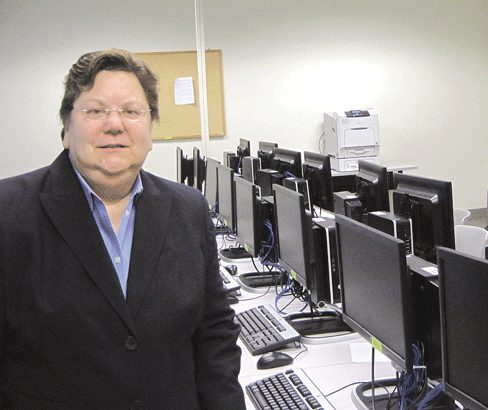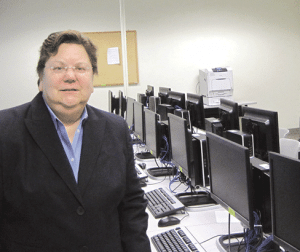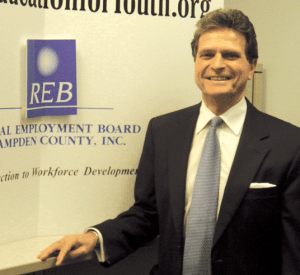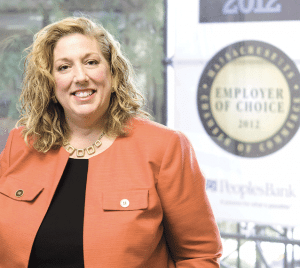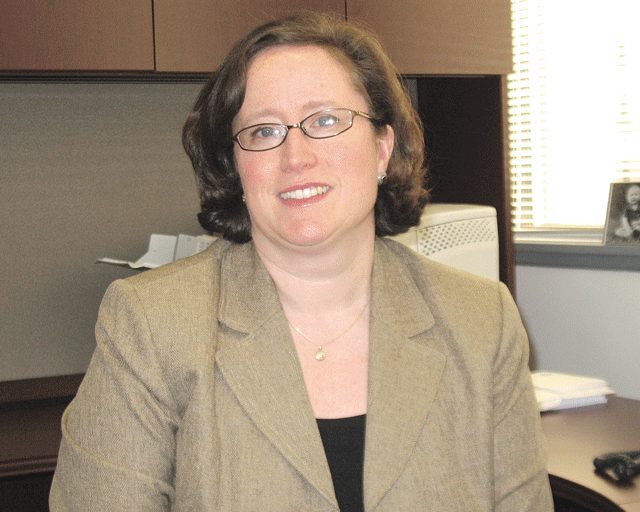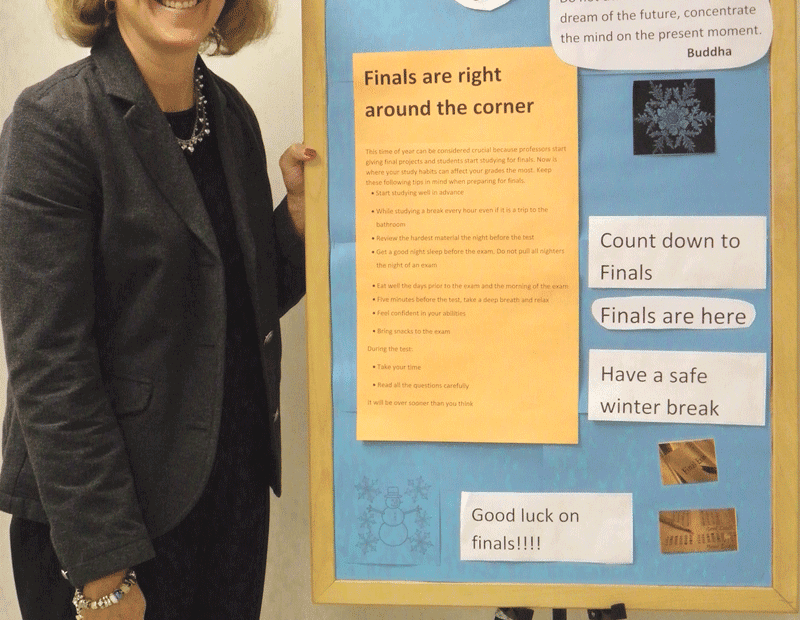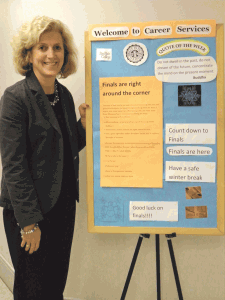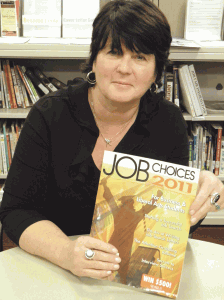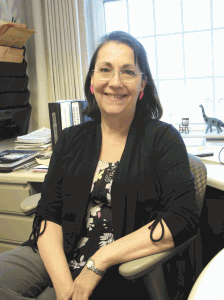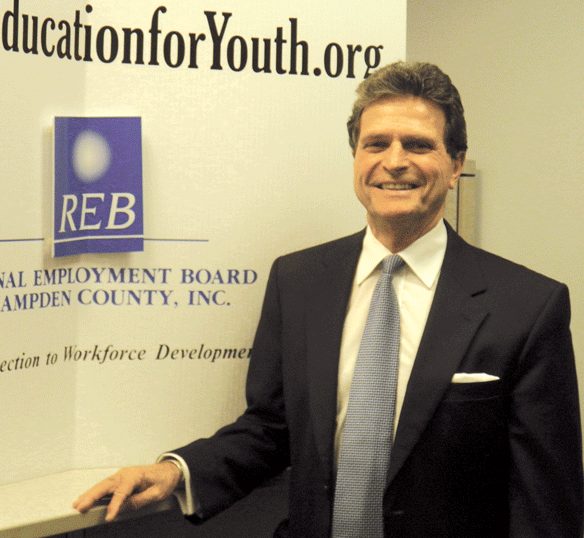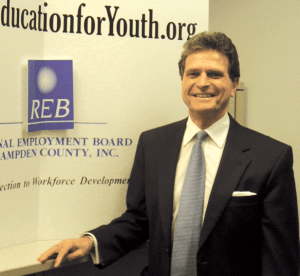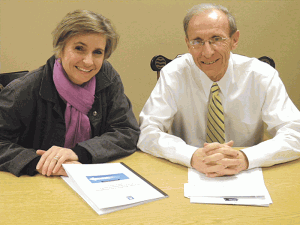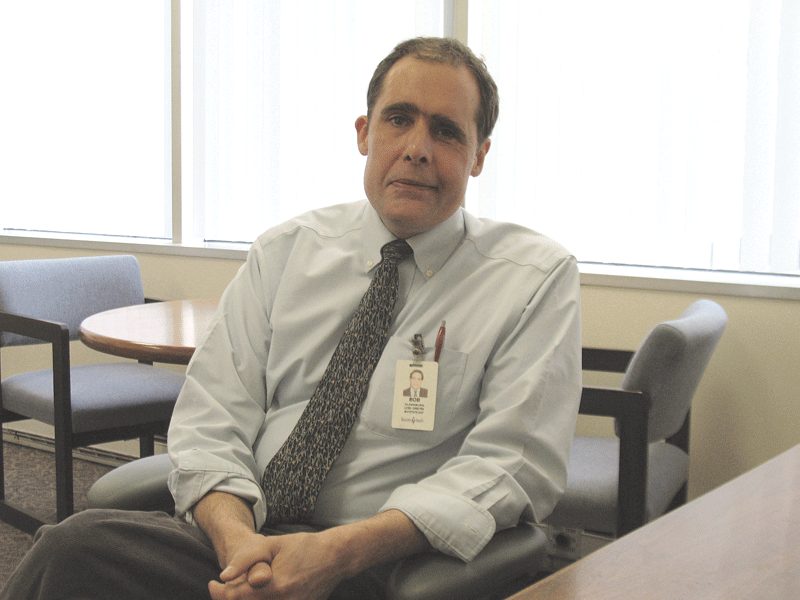Online Education Programs Are Undergoing Rapid Change
John Wells teaches a course in Information Technology Strategy at the Isenberg School of Management at UMass Amherst. But his students don’t spend their time listening to lectures. Instead, they access that information online and use classroom sessions to discuss complex projects or cases, he said.The associate dean for professional programs is just one of many college and university professors taking advantage of technological advances in what has become known as the ‘flipped classroom’ — a form of blended learning that encompasses technology to leverage learning, so a teacher can spend more time interacting with students.
“There’s been a huge movement of change over the past five years, and the way people deliver content has improved dramatically as instructors and students get more comfortable online,” Wells said.
An example of advancing technology is a pilot program at Isenberg for students taking online courses. They are participating in live lectures and interacting with students in traditional day classes via the computer, and if they aren’t available when the class meets, they can watch the captured portion later. “We’re seeing a constant melding of online and offline courses, and we plan to expand the pilot program in the fall,” Wells told BusinessWest.
Integration exists in many degree programs, and at Springfield College, students in the Physical Therapy program take online courses while they are engaged in off-campus clinical fieldwork. “It allows them to discuss their clinical experiences, receive mentoring and enjoy a much richer environment than was possible in the past,” said Jean Wyld, vice president for Academic Affairs. “Discussions can include students from across the country, and everyone joins in the discussion forum.”
She added that it’s a virtual version of everyone getting together at the end of the workday to talk about what happened. “It’s a great addition to our program.”
So, although the two entities — online classes and on-site classes — still exist, the boundaries are beginning to blur, while the benefits and disadvantages of distance learning are becoming clearer as the number of online course offerings expand.
“Online education is a great idea, but traditional education is faced with the dilemma of having to meld the two types of learning. And schools like ours are offering more online courses because the market wants it,” said Christopher Hakala, professor of psychology and director of the Center for Teaching and Learning at Western New England University.
That market includes a diverse group of students, and some are definitely more suited to distance learning than others. But for all students, accessing educational information via the Internet is a valuable tool.
“In the future, online learning at work will play a major role for our graduates, so we want them to learn how to do it well,” said Wyld, adding that the typical 2013 faculty member is using electronic resources to support their teaching. And since many students are mixing online and traditional classes, their skills are growing, along with a set of best practices for online learning being developed at institutions of higher learning.
But it doesn’t take advanced skills to begin, and even those who are almost computer illiterate can participate.
“If you can write an e-mail and attach a word document to it, you can take a distance course,” said Debbie Bellucci, dean of the School of Continuing Education and Online Learning at Springfield Technical Community College. “People think of them as technical, but they aren’t. You don’t need to be a computer programmer or a techie. And they are very popular — 12% of all of the credits we sell are distance credits. Students are taking some courses online and some on-site. They are not buttonholed into one method, and it affords another option for people to complete a degree.”
For this issue and its focus on education, BusinessWest takes an in-depth look at the world of online classes and what students need to know about this type of learning.
Bevy of Benefits

Christopher Hakala says one of the biggest challenges facing educators today is successfully melding traditional and online methods of learning.
Another benefit is that the courses allow every student to voice their opinion via discussion boards. “In a regular classroom, everyone may have their hands up, but then you run out of time, so they can’t contribute their thoughts,” Wells said, noting that both instructors and students tout the forums as an online advantage.
Bellucci agrees, and says it can be a real bonus for shy students due to the sense of anonymity. “No one is staring at you, so people feel safer. And for those who are not good at responding on the fly, it gives them time to think about their answers.”
Flexibility is another advantage, especially for those who commute. “Students can take regular classes on Tuesdays and Thursdays; work Mondays, Wednesdays, and Fridays; and do the rest online,” Wells said.
Hakala concurs. “Convenience is a factor, and students can access material when they need to. Plus, online courses allow us to reach people who might not otherwise be able to take classes,” he said.
In addition, learning on one’s own timetable can allow a student to do an internship and still graduate on time, which can prove beneficial to their future career.
Vana Nespor, dean of Online and Adult Studies at Bay Path College in Longmeadow, said the school has a Saturday degree program that many women take advantage of, especially since a blended course format is available. “Some say their employers have told them their job will be in jeopardy if they don’t get a degree, while others want to move up the career ladder,” she explained. “And although many love face-to-face classes, we are seeing more and more students who like the convenience of taking courses from home.”
She added that Bay Path has received grants that allow it to incorporate advanced technology in all of its classes, including occasional live video chats with instructors.
“The new wave of online courses is exciting and very interactive and gives students the opportunity to build community through Facebook, YouTube, and social media,” she continued. And since online classes include students from around the world, “it opens discussion to a much broader society than if the majority of people in the class came from Western Mass.”
It also allows students to finish degrees who can no longer attend classes on campus. Nespor said Bay Path had a traditional student two courses shy of graduation who needed to return to Africa and was able to complete her degree due to online offerings.
However, Belluci said online courses are not open-ended, and students do face constant deadlines. But they still have a certain amount of freedom. “Some people will work for six hours at one sitting, while others like to do it in smaller pieces. It’s all related to their learning style.”
Plus, there is no lack of social interaction. “We hear that many online students get to know each other better than they would in a classroom because there are no time barriers,” said Belluci. “When you are in a three-hour class, there isn’t time to really talk to anyone. But in most online classes, the first assignment is to introduce yourself, which is not done in a regular classroom.
“A student might spend a whole semester not knowing who the person sitting next to them is or what they do,” she went on. “But online, people form great bonds because they have each other’s e-mails. And faculty members tell us they know more about their online students than the students in their classrooms.”
Drawbacks Exist
Although benefits abound, there are disadvantages, and cost can factor into this because some institutions charge more for online courses, and others don’t include them in the price of full-time tuition.
But perhaps the most critical issue is whether the student is suited to this type of learning. “Older students who are returning to school tend to be better at online learning because they are usually more self-disciplined. It’s a matter of being able to manage your time efficiently,” Hakala said.
Wyld agrees, citing a study of 40,000 students released last month showing that students who are academically unprepared for college may not only fail to benefit from online classes, they may actually be hurt by digital instruction.
“Students need to have strong study skills and a solid high-school foundation to complete college-level online courses. It’s not a great fit for all students for a host of different reasons,” she explained. “Some do much better with face-to-face interactions in regular classes.”
Wyld said the ideal candidate is “a very focused, self-disciplined person who has very good time-management skills. Flexibility is the hallmark of online learning, but students still need to meet the same outcome, and an online learner must go to class.”
Wells advises people to choose their online courses carefully. “If a class is very experiential, don’t take it online,” he said. “Putting concepts into practice is more conducive to face-to-face learning.”
In addition, not all professors are adept at using technology to teach. “Some are very good at it and can turn readings, discussions, and PowerPoint presentations into a good learning experience, while others simply give students assignments and don’t provide them with structure,” Hakala said. “Professors have a long history of in-class experience to draw upon, but sometimes fail to anticipate issues that happen online.
“In a classroom, you can respond rapidly to feedback, but online it’s staggered,” he continued. “And many professors who have been in the classroom for 20 or 30 years have never taken an online course, so they don’t see it from both sides. However, we are getting better at it and moving towards standardization as we develop best practices.”
Wyld concurs. A recent study at Springfield College showed that its typical online student is a woman in her 30s taking classes to advance her career. “Many of them have a job and a family. And the success people have really depends on the quality of the experience. It has to be very interactive to be successful, which depends on the professor and the course design,” she said, adding there is a clear distinction between online courses at non-accredited institutions and those that are accredited.
Final Grade
Although the options to earn a degree are expanding thanks to online options, “there are deadlines, and the assignments are not open-ended, so students who engage in distance learning have to be very self-motivated,” Bellucci reiterated.
But the horizon has few limits. “The world of online education was clumsy when it started. But it has become highly interactive and very engaging, and instead of feeling isolated, students are building a community online and helping each other,” Nespor told BusinessWest.
“This is a going to be a great decade because technology is becoming so sophisticated and we can do things we couldn’t do before,” he went on. “It just gets better and better every day.”





